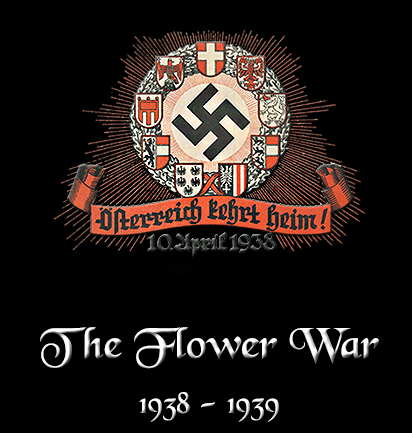

When Adolf Hitler was appointed German Chancellor in 1933, it was on his immediate agenda to consolidate his power. Having accomplished this through a series of political moves and strong arm tactics, his next goal was to rebuild the German Armed Forces. It was impossible to rebuild the armed forces without breaking the Versailles Treaty, but this could not be done safely without a way to defend Germany in case of a response from the Western Allies of France and the United Kingdom. Hitler rejected the Versailles Treaty and began to strengthen the Armed Forces. He reinstituted Military drafting in March 1935, took control of the Rhineland in 1936, and sent the "Legion Condor" to Spain to fight along General Franco and be trained in the art of modern warfare.
Germany began to exert diplomatic pressure with military threats to annex territories which contained German-speaking minorities. The Allies, wishing to avoid war at almost any cost, stood idly by when Austria was annexed, gave in to Hitler's demands in Czechoslovakia, and allowed the return of the Memel district. The "peaceful" expansion process culminated only with the invasion of Poland, when the United Kingdom and France declared war on Germany and World War II began.
13th March 1938 (Anschluss) Commemorative Medal
(Die Medaille zur Erinnerung an den 13. März 1938)
Instituted on the 1st May 1938, the medal commemorated the return of Austria to the German Reich. The move was the first in Hitler's quest for "Lebensraum", and it strengthened German flanks while weakening those of Czechoslovakia. German troops crossed the border on 12th March 1938, without meeting any resistance. The stage had been set by a series of "incidents" provoked by members of the NSDAP in Austria, and diplomatic pressure and ultimatums set forth by the German government. This first action, while perhaps raising suspicions, did not cause general alarm in the world community, as it seemed to be done by choice of the Austrian people who spoke German.
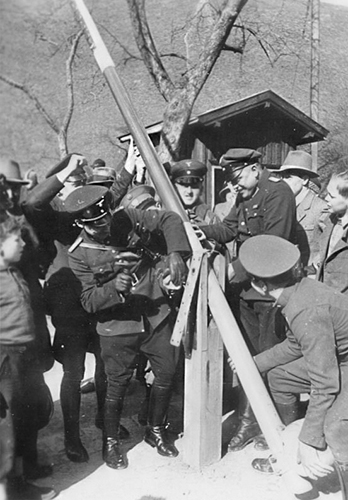
Opening the border crossing - Austria 1938
The medal, known as the "Anschluss medal", was awarded to all those Austrians who contributed to or participated in the annexation as well as the members of the Austrian NSDAP. It was also awarded to German State officials and members of the German Wehrmacht and SS who marched into Austria.
It was awarded until December 13, 1940. In all 318,689 medals were awarded.

13th March 1938 Commemorative Medal

Award documents (urkunde) to the 13th March Commmemorative Medal
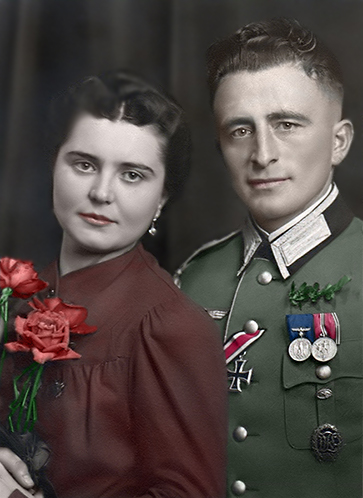
13th March Commmemorative Medal in wear
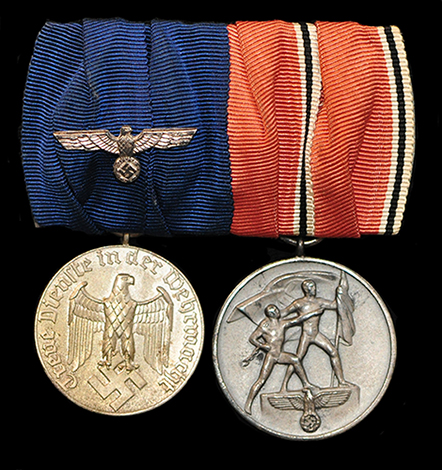
Twin, dual purpose, "Anschluss" Parade/Ribbon Bar
![]()
1st October 1938 Sudetenland Commemorative Medal
(Die Medaille zur Erinnerung an den 1. Oktober 1938)
Instituted on the 18th October 1938, the medal commemorated the union of the Sudetenland to Germany. Once again Hitler employed skilful diplomacy, using brinkmanship as a tool to bring the Sudetenland under German control and paving the road for the annexation of Czechoslovakia.

German troops seen entering Saaz
The medal was awarded to all German (and as well Sudeten) State officials and members of the German Wehrmacht and SS who marched into Sudetenland. Later it was awarded to military personnel participating in the occupation of the remnants of Czechoslovakia on March 15, 1939.
It was awarded until December 1, 1939. In all 1,162,617 medals and 134,563 bars were awarded.
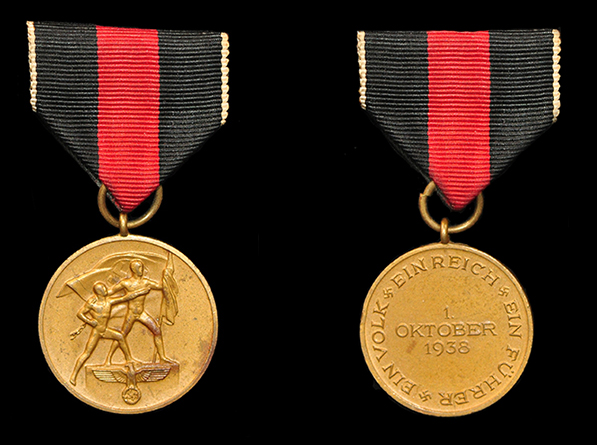
1st October 1938 - Sudetenland Commemorative Medal
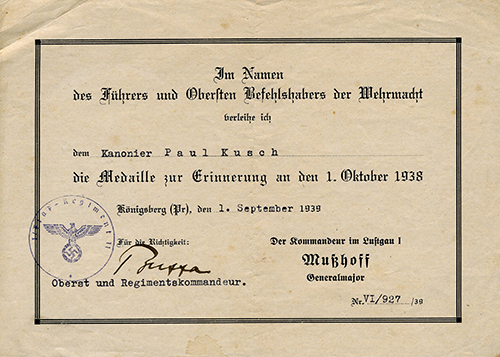
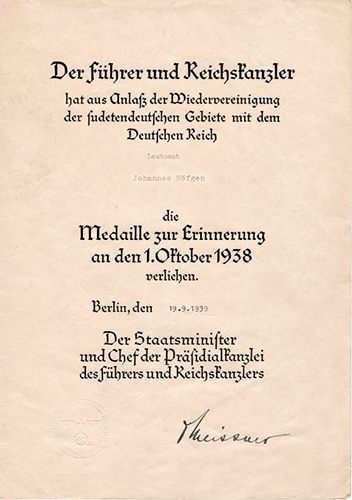
Award documents (urkunde) to the 1st October 1939 Commmemorative Medal

1st October 1939 Commmemorative Medal in wear
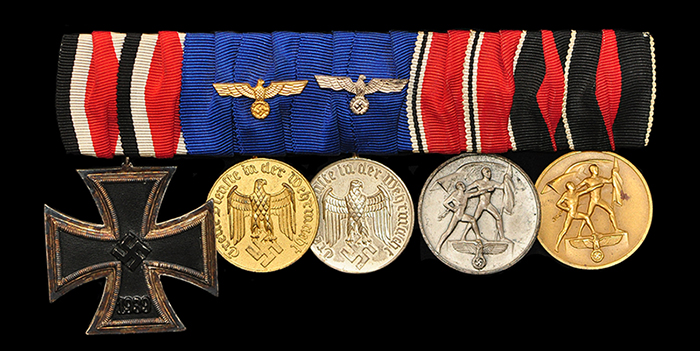
Dual purpose parade/ribbon bar which belonged to a member of the 2nd Panzer Division - Iron Cross 2nd class, 12/4 year service medals, "Anschluss" and 1st October Sudetenland Commemorative medals
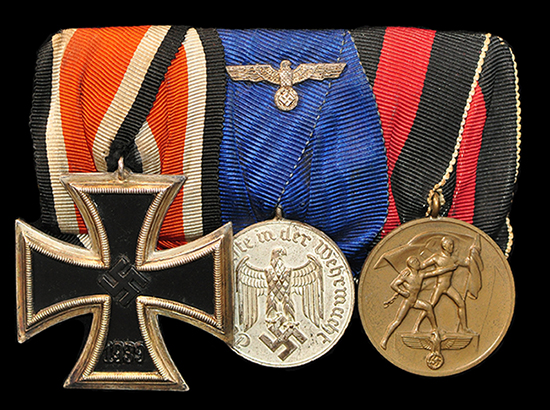
Parade bar with Iron Cross 2nd class, 4 year service medal and 1st October 1939 Commmemorative Medal
Prague Castle Bar
(Spange "Prager Burg")
On the 1st May 1939, a bronze Bar was approved for those who had participated in both the occupation of the Sudetenland and the annexation of Bohemia and Moravia. The bar to be attached to the ribbon of the 1st October 1939 Commmemorative Medal.
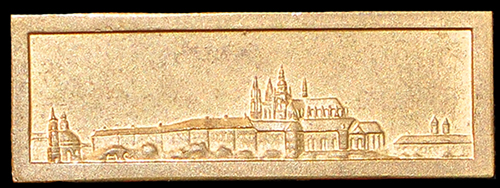
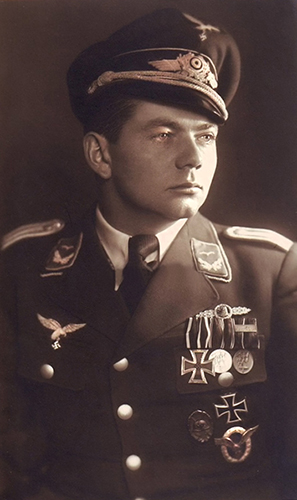
Prague Castle Bar in wear
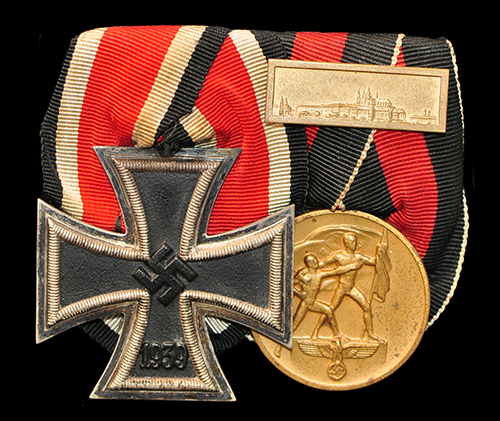
Parade bar with Iron Cross 2nd class and 1st October 1939 Commmemorative Medal with Prague Castle Bar

Ribbon bar showing the 1st October 1939 Commmemorative Medal with Prague Castle Bar
![]()
22nd March 1939 Return of Memel Commemorative Medal
(Die Medaille zur Erinnerung an die Heimkerhr des Memellandes 22. März 1939)
In the last bloodless action, Germany annexed the Klaipėda Region (Memel Territory) from Lithuania on March 22, 1939 after an oral ultimatum. On March 23 a peaceful occupation of the city and district was carried out by German troops who debarked by ship. This area of East Prussia, with 160,000 inhabitants, had been turned over to Lithuania in the aftermath of World War I following the Klaipėda Revolt and Klaipėda Convention of 1924.
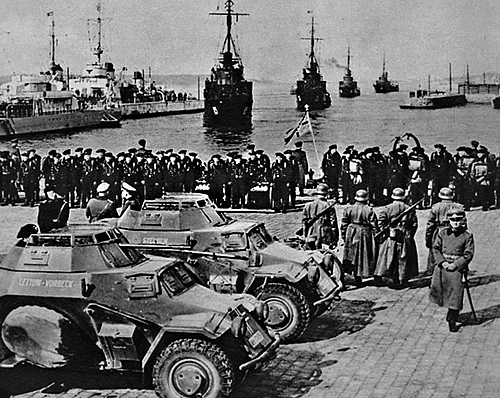
The Kriegsmarine disembarking troops - Memel
On the 1st May 1939, the "Memel Medal" was authorized to commemorate the occupation And presented to all military, political and civil personnel who had distinguished themselves in actions related to the annexation of the district to Germany.
It was awarded until December 1, 1940. In all 31,322 medals were awarded.

22nd March 1939 Return of Memel Commemorative Medal
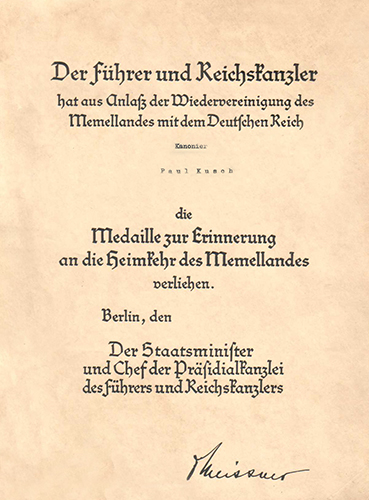
Award document to the 22nd March 1939 Return of Memel Commemorative Medal